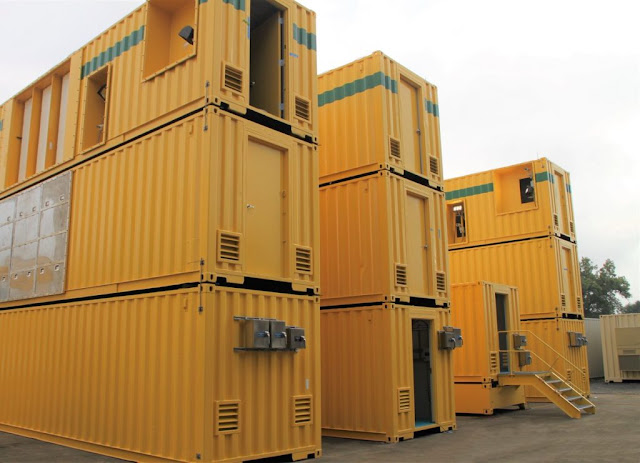
In the world of design, creativity knows no bounds. From repurposing old buildings to incorporating sustainable materials, designers are constantly pushing the boundaries of innovation. One such trend that has gained significant traction in recent years is the modification of shipping containers into functional and aesthetically pleasing spaces. For more information, have a peek at this website.
These once-utilitarian metal boxes are being transformed into everything from trendy homes and offices to vibrant retail stores and even pop-up restaurants. The versatility and durability of shipping containers make them an ideal canvas for architects and designers to unleash their creativity and bring their vision to life.
Sustainable Design Solutions
In an era where sustainability is paramount, shipping container modifications Melbourne offer a compelling solution to the environmental challenges faced by the design industry. By repurposing decommissioned containers, designers can reduce the demand for new construction materials and minimise waste.
Additionally, the modular nature of shipping containers allows for efficient transportation and assembly, further reducing the carbon footprint associated with traditional building methods. Whether used for temporary installations or permanent structures, shipping container modifications embody the principles of sustainable design by giving new life to existing resources while minimising environmental impact.
Innovative Architectural Possibilities
The adaptability of shipping containers lends itself to a myriad of architectural possibilities. Designers are not limited by traditional building shapes and sizes, allowing for the creation of unconventional and eye-catching structures.
From stacked container configurations to cantilevered extensions, the modular nature of these units enables architects to explore innovative design solutions that challenge conventional notions of space and form. Moreover, the industrial aesthetic of shipping containers adds a unique charm to the finished product, creating spaces that are as visually striking as they are functional.

Transforming Communities and Urban Landscapes
Shipping container modifications Melbourne have the potential to revitalise communities and reshape urban landscapes. In areas facing housing shortages or economic decline, repurposed containers offer an affordable and scalable housing solution.
From micro-apartments to temporary shelters for the homeless, shipping container projects have been implemented in cities around the world to address pressing social issues. Furthermore, the flexibility of container architecture allows for rapid deployment in disaster relief efforts, providing much-needed shelter and infrastructure in times of crisis. By leveraging shipping containers as building blocks, designers can contribute to the creation of inclusive and resilient communities that prioritise sustainability and social equity.
Challenges and Considerations
While shipping container modifications offer numerous benefits, they also present unique challenges that designers must navigate. Structural integrity, insulation, and ventilation are among the key considerations when repurposing containers for habitation.
Ensuring compliance with building codes and regulations is another crucial aspect, as local ordinances may vary regarding the use of shipping containers for residential or commercial purposes. Additionally, customisation costs can add up, especially when incorporating high-end finishes or complex design elements. Despite these challenges, the growing popularity of shipping container modifications underscores their potential as a viable and innovative approach to contemporary design.
Economic Implications and Market Trends
Beyond their architectural and environmental advantages, shipping container modifications also carry significant economic implications. With construction costs on the rise and affordable housing in high demand, containers offer a cost-effective alternative for developers and homeowners alike. Furthermore, the growing market for container-based structures has spawned a thriving industry of suppliers, builders, and designers specialising in container architecture.
This burgeoning market presents opportunities for innovation and entrepreneurship, driving further growth and investment in the sector. As consumer preferences continue to shift towards sustainable and modular design solutions, the market for shipping container modifications is poised for continued expansion in the years to come.
Economic Implications and Market Trends: A Booming Industry
Beyond their architectural and environmental advantages, shipping container modifications carry significant economic implications that are reshaping the construction and real estate sectors.
With construction costs steadily on the rise and affordable housing in high demand, shipping containers offer a compelling and cost-effective alternative for developers, architects, and homeowners alike. The utilisation of shipping containers can significantly reduce construction expenses, as they eliminate the need for traditional materials and streamline the building process.
The emergence of container architecture has also sparked opportunities for innovation and entrepreneurship. Entrepreneurs are exploring new business models and service offerings tailored to the unique characteristics of container-based construction. From modular housing startups to design firms specialising in container retrofitting, there is a wealth of entrepreneurial activity driving further growth and investment in the sector.
Additionally, shifting consumer preferences towards sustainable and modular design solutions are fueling the demand for shipping container modifications. As more individuals and businesses prioritise environmental responsibility and resource efficiency, the appeal of repurposed containers continues to grow. This trend is evident in various sectors, including residential, commercial, and hospitality, where container-based structures are increasingly sought after for their eco-friendly credentials and unique aesthetic appeal.
Overall, the market for shipping container modifications is poised for continued expansion in the years to come. With ongoing innovation, increasing demand, and a supportive ecosystem of industry professionals, container architecture is transforming the built environment and paving the way for a more sustainable and cost-effective future in design and construction.
Conclusion:
Shipping container modifications Melbourne represent a new frontier in design, offering a sustainable, versatile, and cost-effective alternative to traditional building methods. From sustainable design solutions to innovative architectural possibilities, the potential applications of container architecture are vast and varied.
By reimagining spaces and transforming communities, designers have the opportunity to shape a more inclusive, resilient, and environmentally conscious built environment. As the demand for creative and adaptable design solutions continues to grow, shipping container modifications are poised to play a significant role in shaping the future of architecture and urban development.
Source From: A New Frontier in Design: Shipping Container Modifications Unveiled




























